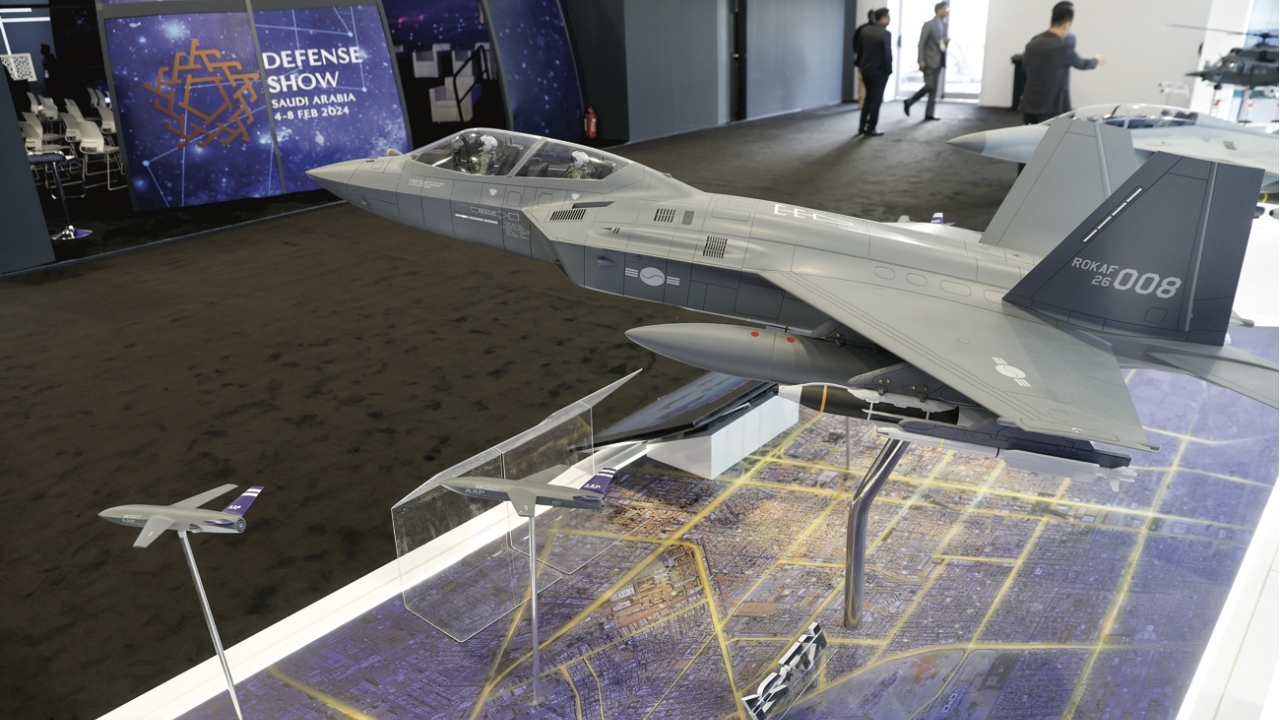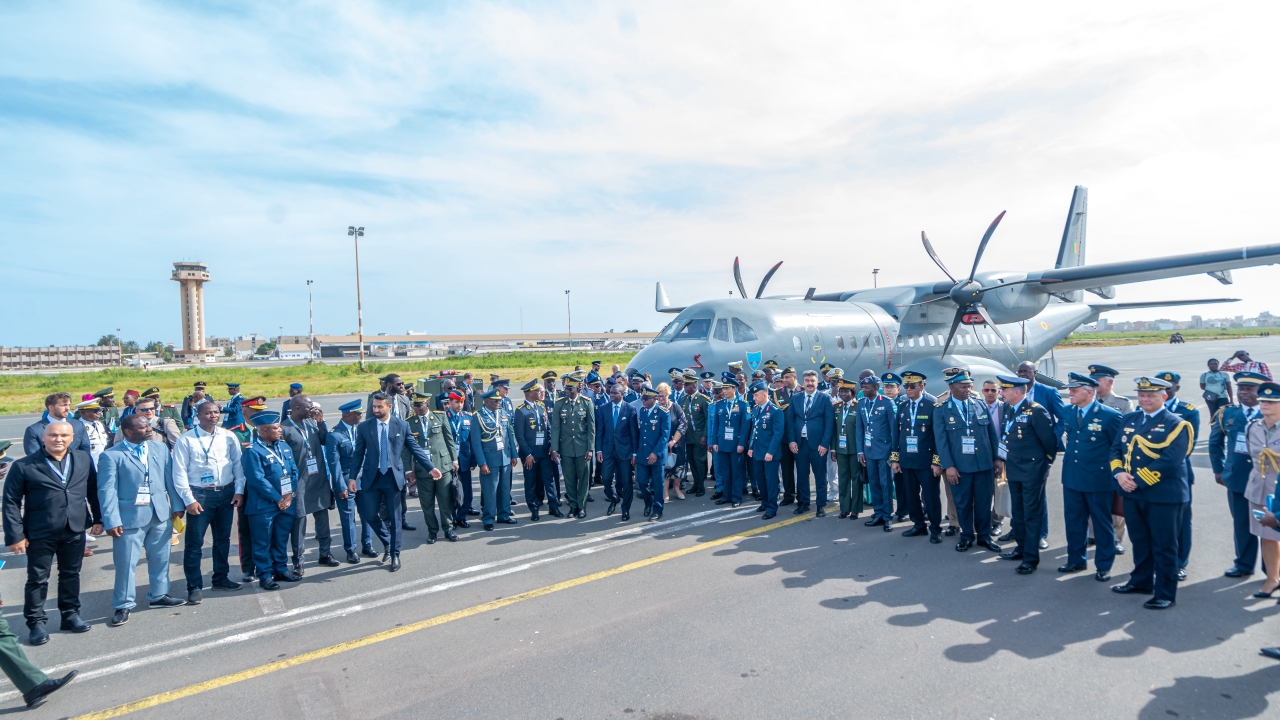WDS: Korean pursue Saudi interest in joint KF-21 programme
A model of the Korea Aerospace Industries (KAI) KF-21 Boramae fighter, is being displayed at WDS.

KAI is showing this model of the KF-21 fighter, in two seat form, surrounded by AAP UCAVs, the basis of the company’s offer to Saudi Arabia. (Photo: Billypix)
A South Korean delegation made an unannounced visit to Saudi Arabia on 23-26 January, meeting with Dr Khalid bin Hussein Al-Biyari, Saudi Arabia’s deputy defence minister, and other officials. The two sides reportedly discussed the joint development of an advanced fighter based on the design of the KF-21.
While some reports suggested the resulting aircraft would be a fifth or sixth-generation multirole fighter, this appears to be an ambitious claim. Though the KF-21 bears some resemblance to the Lockheed Martin F-22 and F-35, the aircraft is not yet a low observable (LO) or ‘stealthy’ design, carrying its weapons externally/semi-conformally, and not having the kind of surface coatings that the US stealth fighters have.
As a first step, KAI will produce a two-seat KF-21 variant with manned/unmanned teaming (MUM-T) capabilities and, under current plans, will upgrade the Block 2 KF-21 to an LO configuration, which would make it a fifth-generation fighter.
KAI has also proposed developing a Block 3 KF-21l, which it classes as a sixth-generation fighter. This aircraft would be larger, more stealthy and more capable, with more powerful engines, and operating as part of a ‘system of systems’ with unmanned effectors and adjuncts, building on the MUM-T effort.
A small UAV known as air launched effects (ALE), will be integrated with an FA-50 Fighting Eagle under a technology demonstration programme, before a larger AAP is integrated with the KF-21, which will control “at least four” of these small UAVs.
By teaming with Saudi Arabia – and perhaps other Gulf nations – South Korea would benefit from access to the Saudi market, while Saudi Arabia itself would gain invaluable experience, which might later strengthen its hand should it want to join the Anglo-Japanese-Italian global combat aircraft programme (GCAP).
Stay up to date
Subscribe to the free Times Aerospace newsletter and receive the latest content every week. We'll never share your email address.

